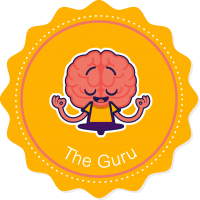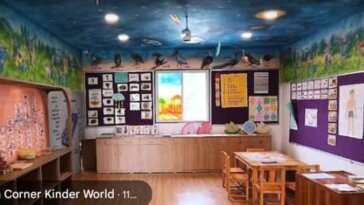Being able to effectively support children with special educational needs (SEN) in the classroom is an essential part of any teacher’s job. Recent figures show that in a mainstream setting, you may (on average) encounter four children in every class who require support for special educational needs.
Research suggests that the behaviour and practice of the classroom teacher has the greatest impact on the academic and social outcomes of children with SEN (Efthymiou & Kington, 2017). However, whilst ultimately responsible and accountable for the progress of these children, some mainstream teachers worry that they are not effectively supporting SEN in the classroom (Warnes et al., 2021).
What Are the Different Types of Special Educational Needs?
The SEND Code of Practice (2015) defines a child or young person as having special educational needs due to a learning difficulty or disability if he or she:
- Has a significantly greater difficulty in learning than the majority of others of the same age, or
- Has a disability which prevents or hinders him or her from making use of facilities of a kind generally provided for others of the same age in mainstream schools or mainstream post-16 institutions.
Many children and young people who have SEN may also have a disability under the Equality Act 2010. Children and young people with disabilities do not necessarily have SEN, but there is a significant overlap between children and young people with disabilities and those with SEN. This article focuses primarily on SEN.
Types of SEN
There are many types of special educational need and the SEND Code of Practice (2015) defines four broad areas of need, as follows:
- Communication and interaction.
- Cognition and learning.
- Social, emotional, and mental health difficulties.
- Sensory and/or physical needs.
If children have an Education Heath Care (EHC) plan, or personalised outcomes linked to High Needs Funding, the targets on these documents will be organised into the four broad areas of need.
The children you teach with SEN may have just one area of need or a combination. Many commonly encountered conditions will impact on more than one area.
Autism Spectrum Disorder is the most prevalent primary need stated on EHC plans for learners aged 4-17, and it would not be unusual for many autistic learners to display needs in all four main areas.
The Communication Trust suggests that co-morbidity (children having more than one developmental difficulty) is the rule rather than the exception, and this can sometimes make categorising primary needs difficult.
Below, we list some of the most common conditions that are often associated with these four broad areas of special education needs.
Communication and Interaction
Speech, Language & Communication Needs (SLCN) is an umbrella term for a wide range of issues, and is the most prevalent need among pupils with SEN. SLCN may include:
- Problems producing sounds correctly.
- Problems understanding language.
- Problems using language.
- Problems using and understanding non-verbal communication.
Conditions or diagnoses that may include SLCN include:
- Developmental Language Disorder (DLD).
- Autism.
- Auditory Processing Disorder (APD).
- Pervasive Developmental Disorder (PDD), sometimes referred to as Pervasive Developmental Disorder – Not Otherwise Specified (PDD-NOS).
Cognition and Learning
Children with difficulties in this area might have:
Specific Learning Difficulty (SpLD) which includes:
- Dyslexia – specific difficulties in literacy.
- Dyscalculia – specific difficulties in numeracy.
- Dyspraxia – specific difficulties in motor skills.
- Dysgraphia – specific difficulties in the acquisition, and recollection, of the ability to write letters and numbers.
Moderate Learning Difficulty (MLD).
Severe Learning Difficulty (SLD).
Autism – although not all autistic learners will have a cognition and learning need.
Social, Emotional, and Mental Health Difficulties (SEMH)
This category can include learners with a diagnosis of any of the following:
- Emotional Behavioural Difficulties (EBD).
- Attention Deficit Disorder (ADD).
- Attention Deficit Hyperactive Disorder (ADHD).
- Obsessive Compulsive Disorder (OCD).
- Oppositional Defiant Disorder (ODD).
- Attachment disorder.
- Anxiety disorders.
- Autism, including those with a Pathological Demand Avoidance (PDA) profile.
Sensory and/or Physical Needs
This area of difficulty can include children with:
- Hearing Impairment (HI).
- Visual Impairment (VI).
- Multi-Sensory Impairment (MSI) – a combination of both hearing and visual impairments.
- Irlen Syndrome.
- Physical Disability (PD).
- Motor skills difficulties.
- Autism.
- Sensory Processing Disorder (SPD).
- Tourette’s Syndrome.
A child may be diagnosed with developmental delay in any of these areas. General Developmental Delay would usually involve difficulties in all the areas.
Whilst these areas help to categorise some of the needs, and can point you in the right direction with regards to possible strategies and interventions, each learner’s areas of strength and need are different.










